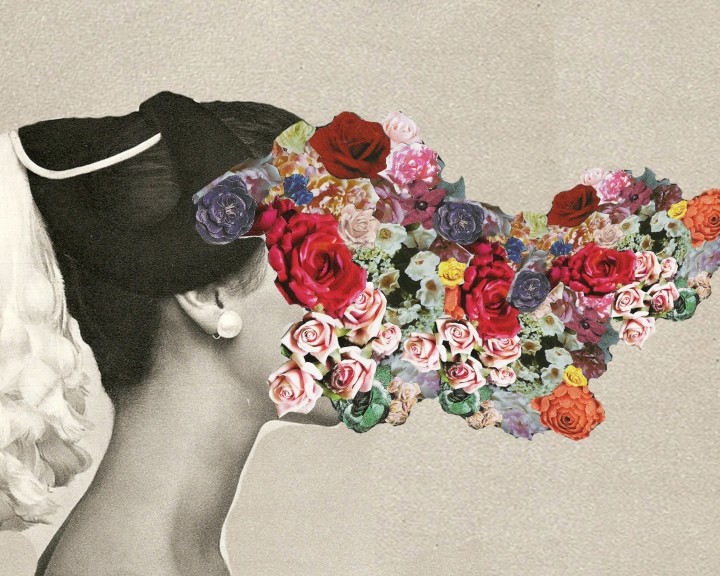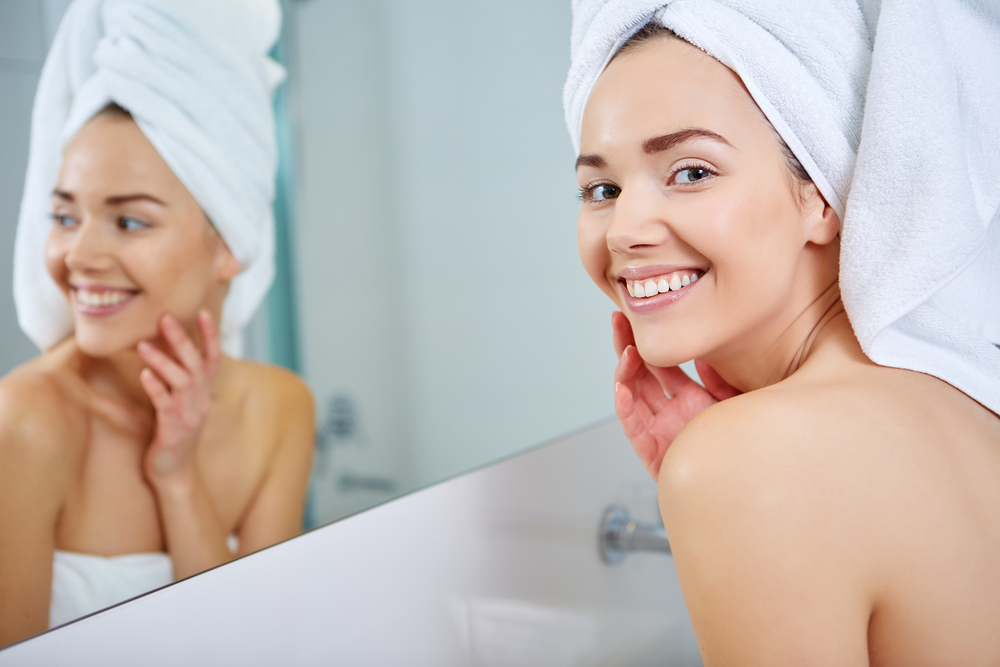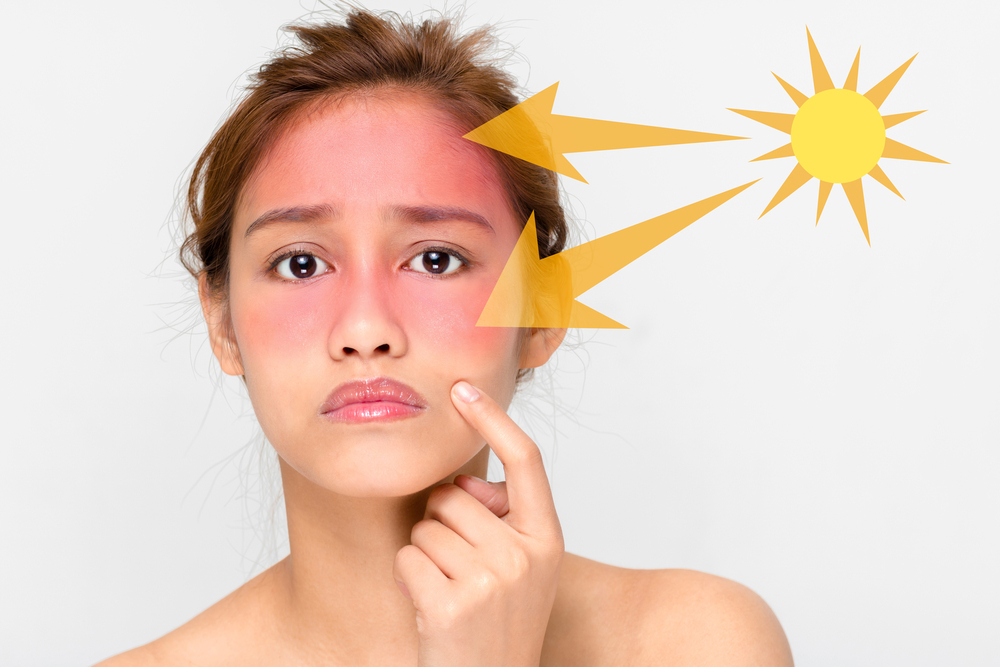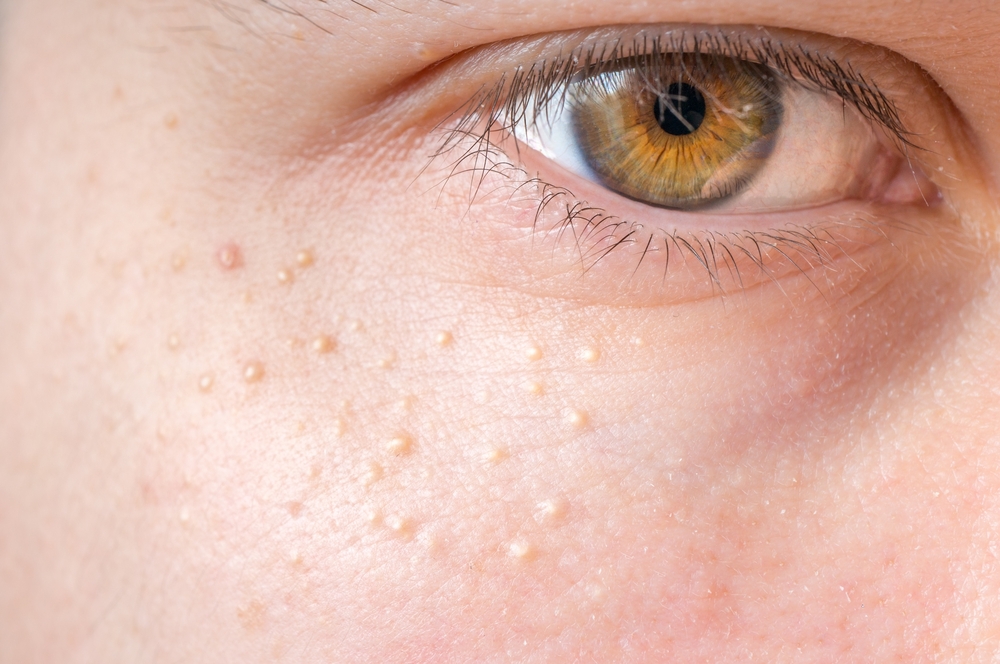- Skin care routines should change as you age.
- Facials and other professional services can help when at-home routines aren’t enough.
- Sunscreen is essential at all ages.
Skin care in your 20s
When you’re in your 20s, your collagen production is still going strong and your skin is supple and elastic. Wrinkles aren’t a big concern yet, but acne could be. At this age, preventative care is key. You should be wearing sunscreen of at least SPF 30 every day – UV rays are one of the biggest causes of premature aging.
If you’re worried about sunscreen causing you to break out, your dermatologist can recommend one that won’t clog your pores. You can also look for the word “non-comedogenic” on the label – which means it’s been formulated without ingredients known to clog pores and cause acne.
Preventative care also extends to Botox injections, chemical peels, and IPL treatments. It may seem counterintuitive to start Botox treatments before you actually have visible wrinkles, but it helps to prevent the formation of deep wrinkles later in life. Similarly, light chemical peels and IPL treatments also help to keep your skin fresh and clear.
If you’re still in your 20s and have relatively clear skin, your at-home skincare routine should be fairly simple. A non-stripping cleanser that removes makeup and daily grime, a balancing toner, a light moisturizer, and a bit of retinol are likely all you need.
“Using retinol in your skincare routine is essential throughout every phase of the aging process,” says Steven Giannetta, master esthetician at the DeRosa Clinic in Boston. “Whether you’re in your 20s and combatting tough acne or your 40s looking to minimize pigmentation and pore size, retinol should be a staple in your routine.”
Should you be burdened with acne-prone skin, however, you will need to adopt a specialized routine.
Skin care for acne-prone skin
While acne is most often associated with teenagers, it can affect people at any age. It’s common to experience acne in your 20s and 30s, and while it doesn’t happen that often, some people find they’re still dealing with the condition in their 40s and 50s.
Acne can have a variety of different causes, including:
- Hormones
- Genetics
- Clogged pores
- Bacteria
There are many types of acne. In addition to regular pimples, there are whiteheads, blackheads, cysts, and nodules. The type and severity of your acne will dictate what kind of treatments you should try.
Acne treatments include topical creams, oral medications, photodynamic therapy, and chemical peels. It can take a lot of trial and error to hit on a winning treatment, so patience and trust in your dermatologist is important.
“Acne prevention is often the key concern for patients in their 20s,” advises Dorothy J. Buckner, M.D., a cosmetic and medical dermatologist based in San Jose, CA. “Regimens that include gentle cleansers with salicylic acid or benzoyl peroxide can be helpful, along with lighter weight moisturizers.”
Take a look at the Zwivel guide to acne causes and treatments for more information.
Skin care in your 30s
By the time you hit your 30s, you’ll probably have started to develop some wrinkling. You might also have begun to notice small dark spots forming on your skin, which may have lost some of its elasticity. This is because as we age our skin slows its collagen production and skin cells don’t turn over as quickly.
“As we grow older, our skin loses hydration and elasticity, leading to lines and wrinkles that are harder to treat,” explains San Diego nurse practitioner Kristen Cantwell. “We also experience fat loss in the face, which creates the appearance of dark circles, sunken cheeks, and jowls.”
You can fight the signs of aging on your face with a skincare routine that includes vitamin C and retinol. Vitamin C helps to brighten skin, and retinol corrects and prevents fine lines and wrinkles by kickstarting cell turnover.
Regular exfoliation with AHA and BHA will help to slough off dead skin cells and reveal new ones, but don’t overdo it. Exfoliating more than twice a week can compromise the skin’s natural barrier and lead to rough, dry skin.
Professional services for people in their 30s to consider include:
Botox
If you haven’t already started Botox treatments, now is the time to do it. Botox relaxes the muscles that cause wrinkles to form in your upper face, thus smoothing existing wrinkles and preventing new ones from developing.
Laser skin resurfacing
There are a wide variety of different cosmetic lasers available that treat everything from dark spots to uneven texture to fine lines and wrinkles.
Medium to deep chemical peels
Light chemical peels are great for a quick skin refresher, but for a more intense, targeted treatment, go for a deeper peel.
Skin care in your 40s
Most people really begin to see major signs of aging by the time they reach their 40s. Wrinkles become more pronounced as years of sun exposure start to take a visible toll on the skin. At this stage of life you need to step up your skincare routine with the addition of wrinkle-fighting peptides, and monthly facials are a must.
“Regular facials combat discoloration and stimulate collagen production to slow the aging process,” explains Jessica Jurkovic, RN at Catara Med Spa in Chicago.
You may also want to look into fractional laser resurfacing if your skincare products alone aren’t producing the results you want. There are two main types of laser resurfacing: ablative and non-ablative. Ablative lasers are more aggressive, and while they require a fair amount of downtime, they also produce dramatic results. A single session can take 5 years or more off your face.
Skin care in your 50s and older
Once you’ve reached your 50s the effects of any bad habits you might have had when you were younger will probably be fully evident on your skin. If you smoked tobacco, ate a lot of junk food, or got too much sun exposure, your skin will likely be wrinkled and discolored with a poor texture.
Even if you took good care of your skin and led a healthy lifestyle, gravity and age generally start to show on the face by the time you’ve reached your fifth decade on the planet. While non-surgical cosmetic technologies can be effective to a certain degree, at this point it may be wiser to consider plastic surgery.
Popular plastic surgery procedures for men and women in their 50s and older include:
Recent advances in surgical techniques/technology have rendered facial plastic surgery safer than ever, and better, are producing more natural-looking results. As long as you choose a board-certified plastic surgeon who understands your goals, you shouldn’t have to worry about the work looking fake or overdone. Board-certification is very important, both for aesthetic and safety reasons.
If you do choose to undergo plastic surgery, don’t forget or abandon your at-home skincare routine afterward. Your results will last much longer if you stick to a customized regimen and make sure to lead a healthy lifestyle, stay hydrated, and keep out of the sun.
Don’t forget your sunscreen
Sunscreen is the single most important part of your skin care regimen at any age. Whether you’re 21 or 61, you should be protecting your skin with sunscreen and avoiding the sun at peak hours.
In addition to sunscreen, wearing sun protective clothing like UV blocking long-sleeved shirts and hats with wide brims can help shield your skin from harmful UVA and UVB rays. Try to seek shade if you’ve been in the sun for an hour or more.
When you know you’re going to be in the sun for a while, like on a trip to the beach, don’t forget to reapply your sunscreen every few hours. And always make sure to cover spots that are easy to forget about, such as the ears and toes.









